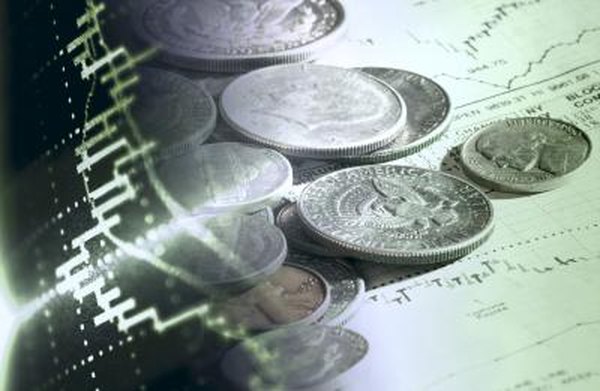Difference Between Market Value and Intrinsic Value
Intrinsic value is hidden, while market value is in plain sight.
Hemera Technologies/AbleStock.com/Getty Images
Market value is the value of a financial asset that is readily available from market quotations. Financial assets include stocks, bonds and real estate properties. In their book "Security Analysis," Columbia University professors Benjamin Graham and David Dodd define intrinsic value as the value determined by tangible fundamentals, such as earnings, operating cash flow and dividend payments.
Intrinsic Value
New York University Stern School professor Aswath Damodaran wrote on his blog that, in principle, an asset has intrinsic value only if it generates cash flow for investors. Examples of such cash flow include dividends for stocks, coupon interest payments for bonds and lease payments on residential and commercial real estate properties. The methods to estimate the intrinsic value include discounted cash flow analysis and liquidation value. Discounted cash flow analysis is the sum of future cash flows, discounted back to the present at a specific interest rate. The liquidation value of a company is the sum of its assets if you were to sell them at current market prices.
Market Value
Market value is what investors and buyers are willing to pay for an asset in a public auction. For example, the market value of a public company is what investors are willing to pay for its shares, while the market value of a home is its closing price. Valuation of private companies is more difficult. You can add the fair market value of assets, inventory and leasehold improvements to estimate the market value of a private company. Alternatively, you can base your market valuation on the market value of comparable publicly traded companies or the price of recent acquisitions of similar companies in the same industry and geographical area. You can use the operating history, location, client loyalty and other intangible factors to estimate the market value of service-oriented companies with few assets.
Significance
Market value is generally different from intrinsic value. For example, stock prices seldom reflect the true value of companies, just as the selling price of a home is almost never equal to its appraised value. This is because market prices reflect supply and demand. Strong investor demand can lead to overvaluation, meaning the market value is higher than the intrinsic value. Conversely, weak demand and general investor pessimism can result in undervaluation, which means that the market value is lower than the intrinsic value.
Strategies
Value investors are patient and long-term investors. They ignore short-term market fluctuations and focus on the intrinsic value of their portfolio companies. They use periods of market volatility to rebalance their portfolios, which usually means adding to positions in stocks with strong fundamentals and taking profits in stocks that may have become overvalued. On the other hand, momentum investors focus on price charts and other technical indicators to make trading decisions. They do not have the time to wait for intrinsic values to catch up with market values. They are more interested in profiting from short-term market trends, either up or down.
References
Resources
- International Finance Corp.: SME Toolkit -- Business Valuation Methods
- Security Analysis, Sixth Edition; Benjamin Graham and David Dodd; 2008
Writer Bio
Based in Ottawa, Canada, Chirantan Basu has been writing since 1995. His work has appeared in various publications and he has performed financial editing at a Wall Street firm. Basu holds a Bachelor of Engineering from Memorial University of Newfoundland, a Master of Business Administration from the University of Ottawa and holds the Canadian Investment Manager designation from the Canadian Securities Institute.

